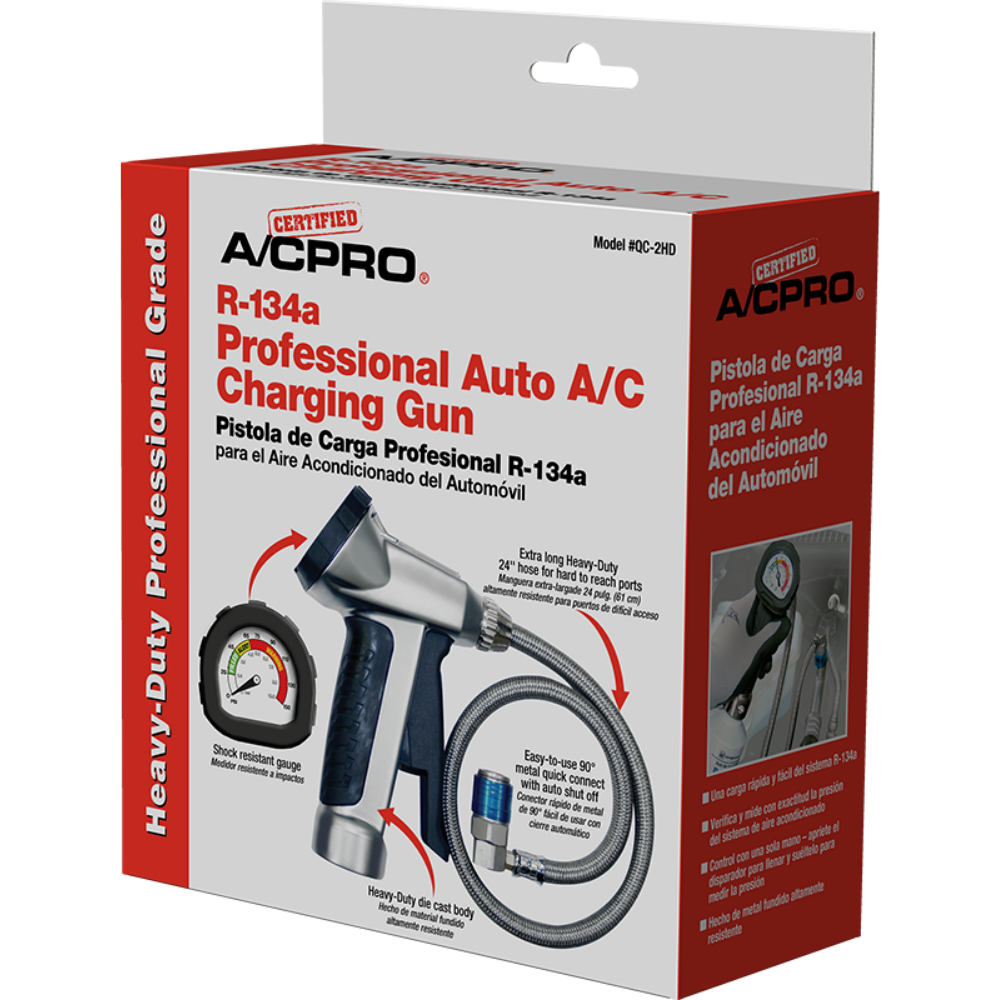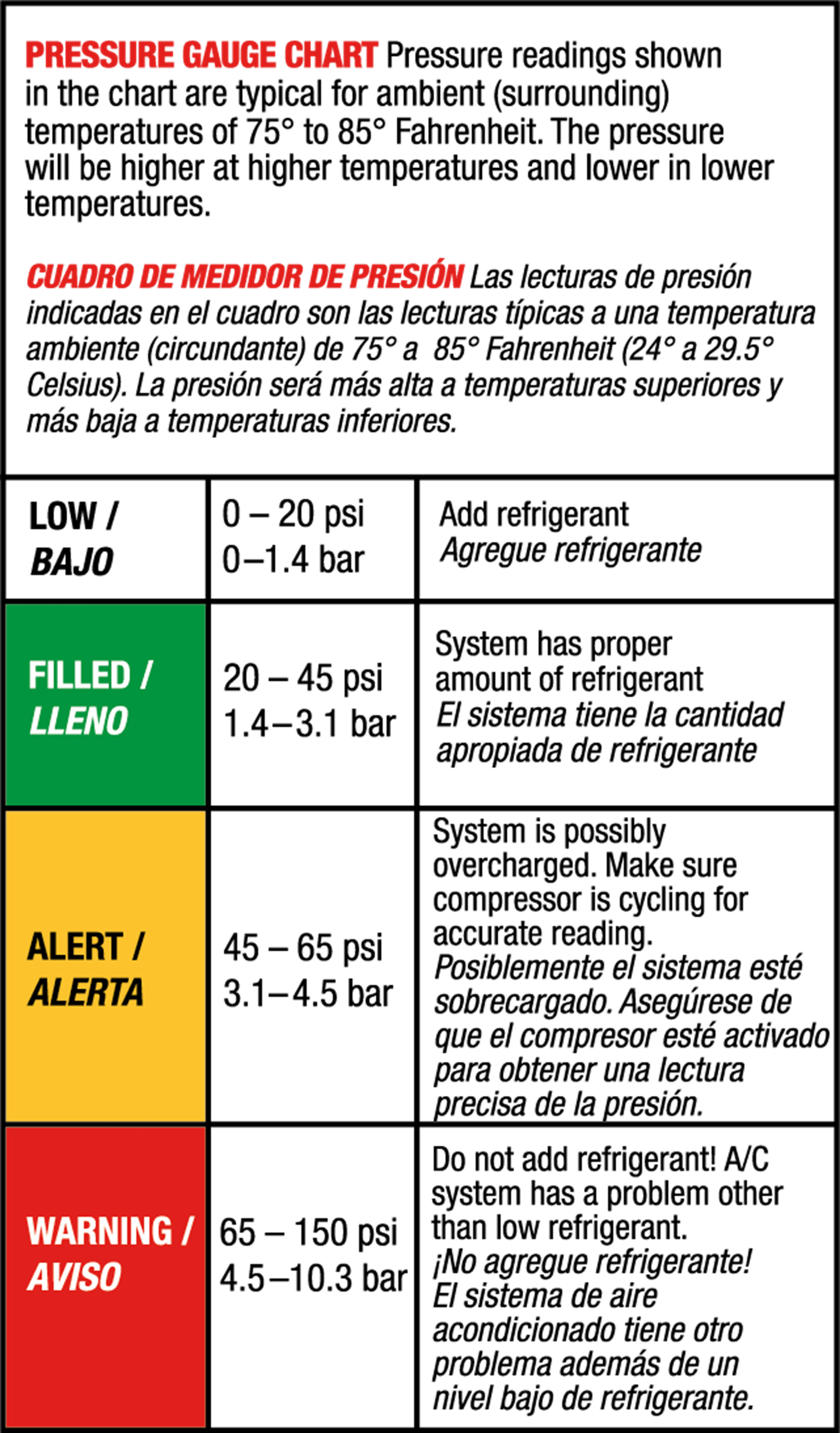ID02020EN 134A Professional Auto A/C Charging Gun

Product features
- Easy to use
- Long hose
- Heavy Duty
Product Description
If you’re wondering how to charge the AC in your car with a heavy-duty tool, this is the one used by professionals. An auto A/C trigger dispenser and gauge made for professionals. Designed with a steel braided hose for heavy-duty use, this reusable trigger and gauge allows for fast and accurate charging of R-134A A/C systems.
- Provides accurate pressure reading and fill
- Extra-long steel braided hose for heavy duty use
- Can be used independently without connecting to canister
Usage Directions
A/C PRO® CERTIFIED QC-2HD R-134A PROFESSIONAL MEASURE
- Compatible with A/C PRO® R-134A Auto Air-Con Recharge (AC02001EN), STP® Auto Freeze Air-Con Recharge (ID02000EN) and STP® EZ CHILL Auto Air-Con Recharge (ID02001EN)
- Find port – Locate the low-pressure port of the A/C system. Unscrew the dust cap.
- Measure – Start engine and set A/C to maximum cooling. Connect Charging Gun to the low-pressure port. Check the pressure and refer to the chart below

- Fill – Remove coupler from port. Screw R-134A refrigerant can into Charging Gun. Reconnect coupler to the low-pressure port. Squeeze the trigger to charge. Release trigger to check refrigerant level
IMPORTANT: ALWAYS WEAR GLOVES AND SAFETY GOGGLES WHEN RECHARGING YOUR SYSTEM.
Keep out of reach of children.
FAQs
-
The most common reasons for the pressure gauge to indicate a red/high pressure reading are the car is not running, or the A/C is not on with the fan switch set to high and the temperature at its coldest setting. In order to obtain an accurate pressure reading the car must be running, the A/C set to the coldest position, and the fan setting set to high. Also, as the car’s compressor cycles on and off, the needle on the gauge will move in and out of the red/high pressure area of the gauge. This is normal. Here is an example of a car compressor cycling on and off:
-
Your system should be vacuumed if you have replaced a component part in the system, or if the pressure gauge indicates that the A/C system pressure is lower than 10psi.
-
When checking low-side pressure you will get two different pressure readings, one when the compressor cycles on and one when the compressor cycles off. Use the pressure reading when the compressor is cycled on and the system is operating at its highest settings (temp to max cold and fan on high). When the compressor cycles on you should see the needle on your pressure gauge begin to drop. When the compressor turns off you will see the needle move back to a higher pressure. Take the reading that occurs when the pressure is at its lowest point when the compressor is cycled on. To tell if your compressor is cycling properly, view the video below:

